Marmoset
Marmosets are the 22 New World monkey species of the genera Callithrix, Cebuella, Callibella, and Mico.
Most marmosets are about 20 centimetres (8 in) long. Relative to other monkeys, they show some apparently primitive features: they have claws rather than nails, and tactile hairs on their wrists. They lack wisdom teeth, and their brain layout seems to be relatively primitive. Their body temperature is unusually variable, changing by up to 4 °C (7 °F) in a day.
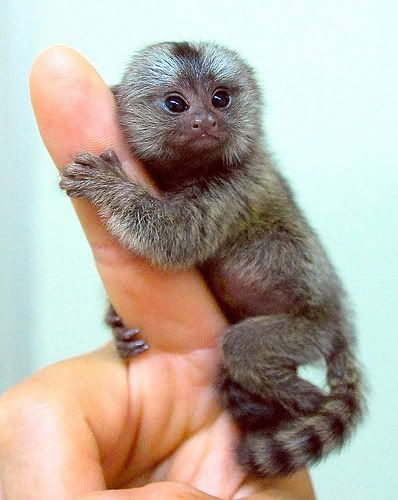
Marmosets exhibit germline chimerism, which is not known to occur in nature in any other primate. Germline chimerism occurs when the germ cells (for example, sperm and egg cells) of an organism are not genetically identical to its own.
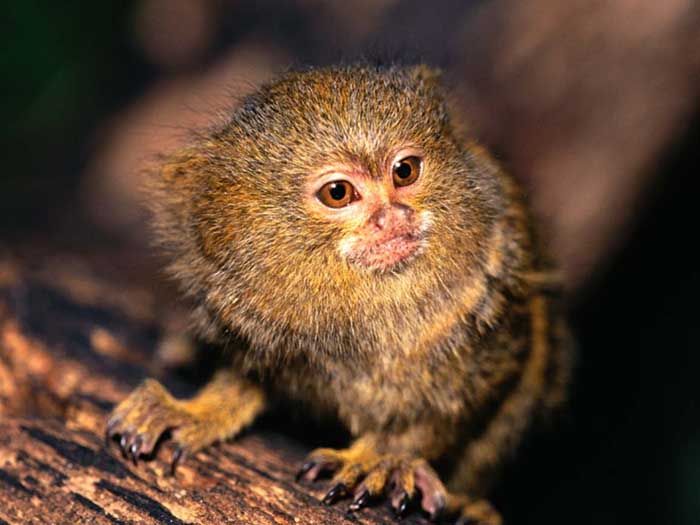
It has recently been discovered that marmosets can carry the reproductive cells of their (fraternal) twin siblings, because of placental fusion during development. (Marmosets almost always give birth to fraternal twins.)
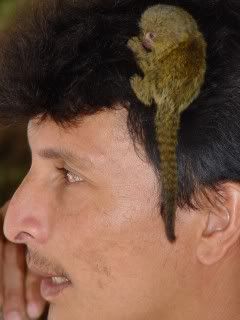
Marmosets are highly active, living in the upper canopy of forest trees, and feeding on insects, fruit and leaves. They have long lower incisors, which allow them to chew holes in tree trunks and branches to harvest the gum inside; some species are specialised feeders on gum.
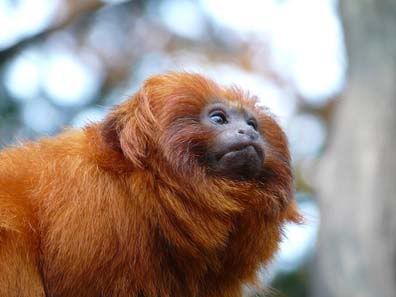
Callithrix comes from ancient Greek and means "beautiful fur." Marmoset is from the French marmouset, uncertain etymology.

Wied's Marmoset [pictured below] is highly social, spending much of its time grooming. It has individually distinctive calls, and it communicates through gestures and olfactory markings as well. Unlike other marmosets, Wied's Marmoset lives in groups consisting of 4 or 5 females and 2 or 3 males (plus children). They are matriarchal, and only the dominant female is allowed to mate.
It is eaten by birds of prey (the Harpy Eagle, the Gray Hawk, the Roadside Hawk and the White-tailed Hawk), felines (the Jaguar, Jaguarundi and Ocelot) and snakes in tropical and subtropical forests of southeastern Brazil.
The coloring of Wied's Marmoset is mostly black, with white markings on cheeks and forehead. It has rings on its tail and black tufts of fur coming out of its ears.
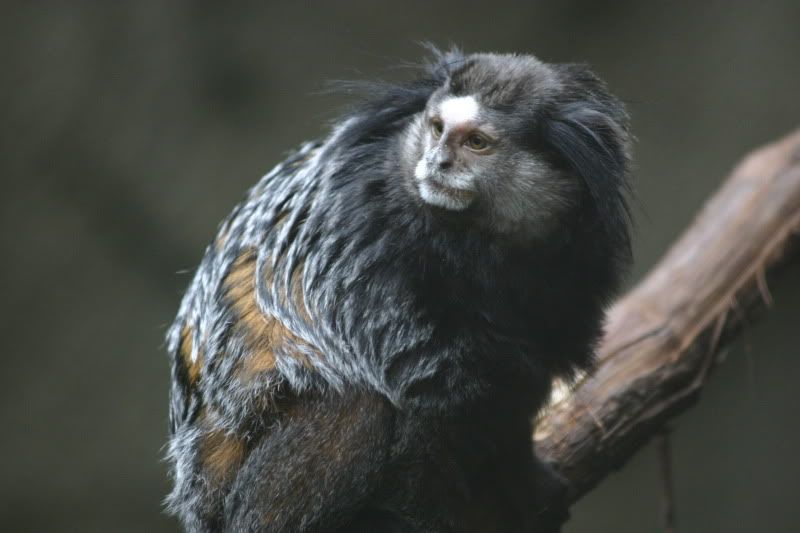
The monkey is mentioned in Shakespeare's Tempest, when Caliban says he will instruct his new master Stephano "how to snare the nimble marmoset" [for eating], on the no-man island where the play takes place (Act 2, Scene 2).
- wikipedia [marmosets]
"Marmoset there’d be days like this
There’d be days like this, my marmoset
Marmoset! Marmoset!"
- Urban Legend
0 件のコメント:
コメントを投稿